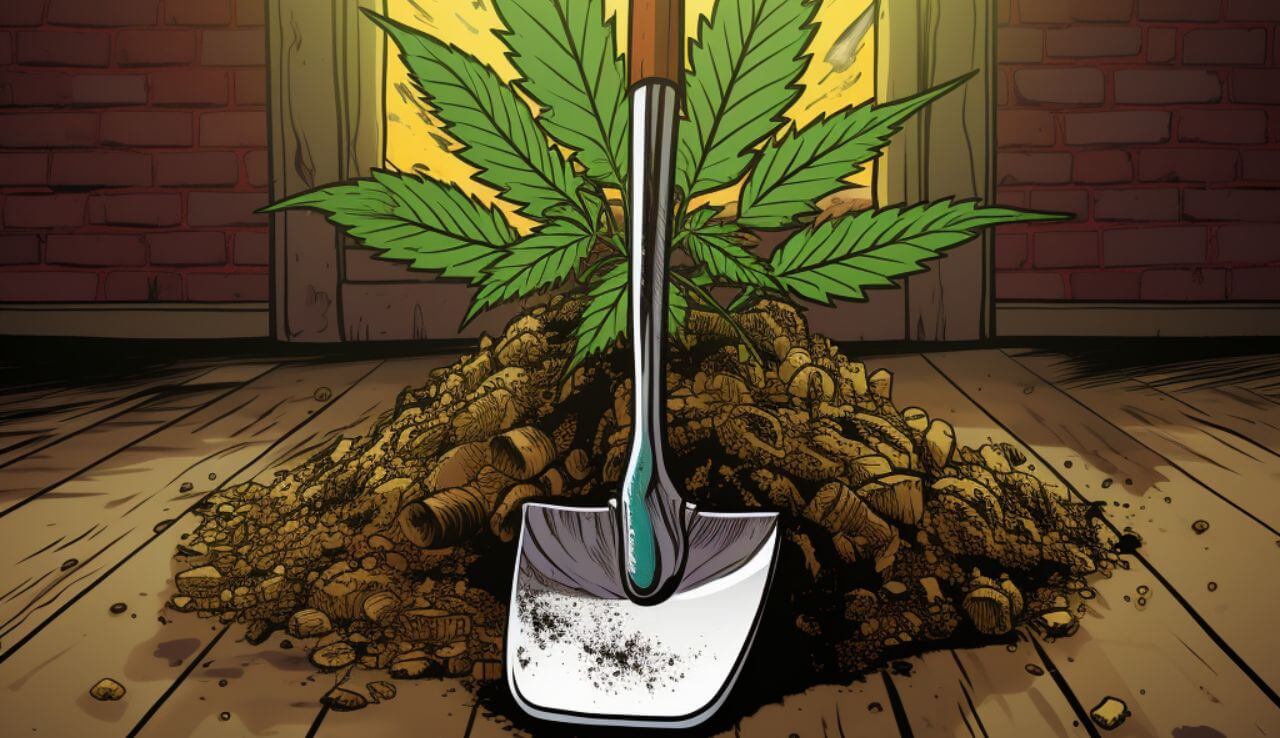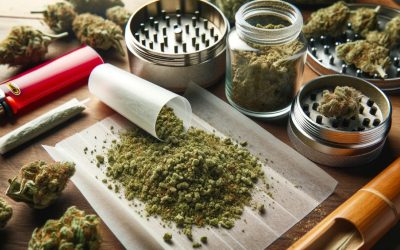When it comes to protecting plants, especially cannabis, from pests, growers are constantly searching for effective, eco-friendly solutions. Enter Spinosad, an organic pesticide that has become a go-to option for battling a variety of garden invaders without harming the environment. But what exactly is Spinosad, and why is it so popular among cannabis cultivators and gardeners alike? Let’s break it all down.

What Is Spinosad? 🌱
Spinosad is a natural pesticide derived from Saccharopolyspora spinosa, a soil-dwelling bacterium. It was discovered in the 1980s and has since been widely adopted for agricultural and horticultural pest control. Classified as an organic product, Spinosad is highly effective against a broad range of insects but is considered safe for plants, humans, and many beneficial garden allies like bees (when used responsibly).
How Does Spinosad Work? 🐜
Spinosad works by targeting the nervous system of insects. Once pests ingest or come into contact with it, their nervous systems become overstimulated, leading to paralysis and death. It’s a quick and efficient way to eliminate unwanted bugs while minimizing harm to the surrounding environment.
Key Features of Spinosad:
- Ingestion or Contact: Pests don’t have to eat it to be affected—contact alone can be lethal.
- Selective Action: Spinosad primarily impacts pests like caterpillars, thrips, and spider mites, leaving beneficial insects relatively unharmed.
- Degradation: It breaks down quickly in sunlight, reducing the risk of long-term residues on plants.
Why Do Growers Use Spinosad on Cannabis? 🌿
Cannabis plants are vulnerable to a variety of pests, and Spinosad is particularly effective at managing some of the most common culprits. Here’s why it’s popular among cannabis growers:
Organic Certification: Spinosad is approved for use in organic farming, making it ideal for growers who want clean, chemical-free products.
Broad Spectrum: It’s effective against pests like spider mites, thrips, caterpillars, and fungus gnats.
Minimal Residues: Since Spinosad degrades quickly, it doesn’t linger on cannabis flowers or leaves, making it safe for both the plant and the consumer.
Safe for Beneficial Insects: When applied correctly, Spinosad doesn’t harm pollinators like bees or predatory insects like ladybugs.
How to Use Spinosad Effectively 🚿
Mix Spinosad concentrate with water as directed, then spray affected plants, ensuring both sides of the leaves are coated. Apply in the early morning or late afternoon to protect beneficial insects. Reapply every 7–10 days if needed, but don’t overuse to prevent pest resistance. Stop using it a few weeks before harvest to ensure clean buds.

Advantages of Spinosad 🌿
- Organic and Natural: Derived from soil bacteria, making it environmentally friendly.
- Fast-Acting: Quickly eliminates pests through ingestion or contact.
- Low Residue: Breaks down rapidly in sunlight, leaving minimal residues on plants.
- Safe for Most Beneficial Insects: When applied correctly, it spares pollinators like bees.
- Broad-Spectrum Use: Controls a wide range of pests, including thrips, caterpillars, and spider mites.
Disadvantages of Spinosad ❌
- Resistance Development: Pests can become resistant if overused.
- Harm to Aquatic Life: Runoff can negatively impact aquatic ecosystems.
- Short Residual Effect: Requires frequent reapplication as it breaks down quickly in sunlight.
- Not Ideal for Severe Infestations: May need to be combined with other solutions for heavy pest problems.
- Rain Sensitivity: Washes off easily in rainy conditions, reducing its effectiveness.
Is Spinosad Safe? 🛡️
One of the reasons Spinosad is so popular is its safety profile. Here’s what you need to know:
- Humans and Pets: Spinosad is non-toxic to humans and pets when used as directed, but always wash treated produce before consuming.
- Beneficial Insects: It has minimal impact on bees and other pollinators when applied at the right time (early morning or late evening).
- Environment: Spinosad degrades quickly in sunlight, making it less likely to accumulate in soil or water sources.
Alternatives to Spinosad 🌿⚡
If Spinosad isn’t an option or isn’t effective for your needs, consider these natural and organic alternatives:

Why Is Spinosad Banned? 🚫
Spinosad has been banned or restricted in certain countries and regions due to concerns about its potential effects on aquatic ecosystems. While it’s considered safe for humans and most beneficial insects, improper use or runoff into water sources can harm aquatic invertebrates. Regulations vary, so it’s important to check local guidelines before using it.
When Not to Use Spinosad! ❌
While Spinosad is highly effective, there are situations where it might not be the best choice:
- Severe Infestations: For heavy pest problems, it may need to be combined with other solutions.
- Overuse Risks: Pests can develop resistance to Spinosad if it’s over-applied, so alternate with other treatments when possible.
- Rainy Conditions: Spinosad washes off easily in rain, so it’s best applied during dry weather.
Spinosad in the United States
In the U.S., Spinosad is approved for use in organic farming and is commonly used in agriculture, horticulture, and cannabis cultivation. However, it must be used in compliance with Environmental Protection Agency (EPA) guidelines to avoid misuse and environmental harm. Its availability may vary by state due to differing local regulations.
Final Thoughts
Spinosad is a game-changer for growers looking for an eco-friendly, effective solution to pest control. It’s organic, fast-acting, and versatile, making it a favorite for cannabis cultivators and gardeners alike. If you’re dealing with a pest problem and want something that’s safe for the environment, your plants, and you, Spinosad might just be the answer.
FAQs
Can Spinosad be used indoors?
Yes, Spinosad can be used indoors, but ensure proper ventilation and avoid spraying near food preparation areas.
Does Spinosad work on all pests?
No, Spinosad is effective against specific pests like thrips, spider mites, and caterpillar,s but not against all insects.
How long does Spinosad take to work?
Spinosad starts affecting pests within hours and can eliminate infestations within a day or two.
Does Spinosad harm pets?
Spinosad is generally safe for pets if used correctly, but avoid direct exposure to pets during and immediately after application.
Can Spinosad be mixed with other pesticides?
It can, but always check compatibility on product labels or consult with agricultural experts to avoid negative reactions.
Is Spinosad safe for hydroponic systems?
Yes, but avoid excessive runoff into water reservoirs as it may harm aquatic organisms.
Can pests develop resistance to Spinosad?
Yes, overuse can lead to resistance. Rotate with other pest control methods to maintain effectiveness.
Disclaimer: This content is for informational purposes only and does not constitute medical, legal, or professional advice. Always consult with a qualified professional before making any decisions related to health or cannabis use. Use cannabis products responsibly and in compliance with local laws and regulations.





